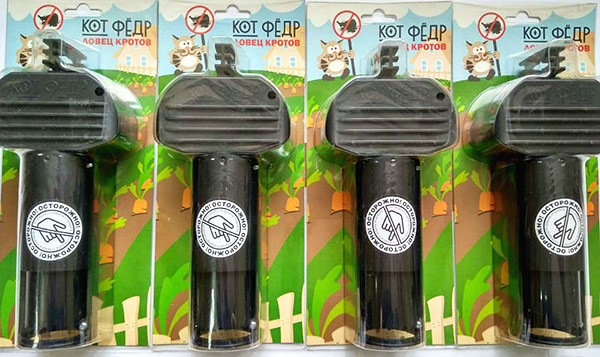
Cat Fedr is a relatively recently-launched mole-catcher of Russian production, the device and principle of operation of which make it easy to set it into working position, and after catching a mole or any rodent, to shake the animal out of the trap without picking it up.
The trap could be called innovative for the Russian market, if not for one “but”. Externally, the Kot Fedr mole trap is an almost complete copy of the widely known SuperCat Vole Trap mole trap from SWISSINNO (Switzerland). In the Russian version, the original design is completely repeated with the exception of marking: instead of “SuperCat”, “Cat Fedr” is indicated. This suggests that the Russian trap is a slightly cheaper replica of the Swiss trap.
This is how these devices look in comparison with each other:

It looks like mole cat cat Fedr
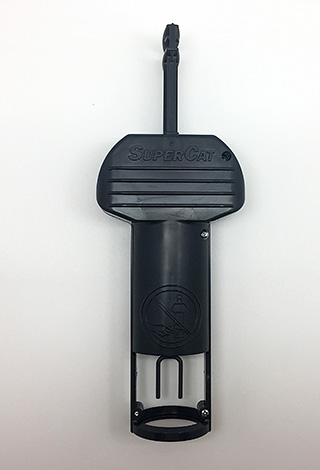
SuperCat Vole Trap
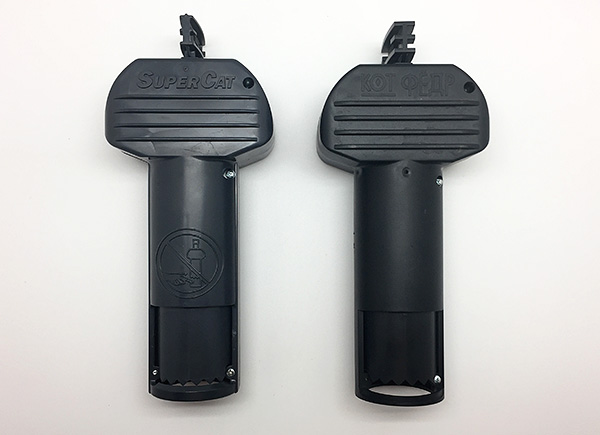
Outwardly, the two molehills are similar to each other.
Let's see if the Cat Fedr mole trap is a complete analogue of the Swiss trap, as well as how effective and convenient the domestic version is in operation.
Appearance and design features
Cat Fedr is a mechanical mole catcher - in fact, this device is a plastic tube about 20 cm long, at one end of which there is a wide box with a handle for cocking the mechanism. The trap body is made of dark gray plastic.
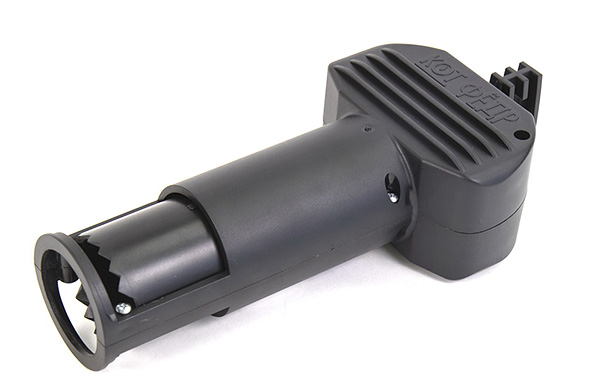
The principle of operation of Cat Fedra is relatively simple:
- The lower part of the mole catcher lowers into a pre-prepared hole in the soil that leads the mole. The bottom of the tube should be at the bottom of the course, but so that the holes in the bottom of the trap coincide with the direction of travel, and the walls with the walls of the hole. In this position, the box and the lever for cocking the mechanism remain above the ground;
- To cock the mechanism, one hand rests on the molehill box, and the second pulls the handle of the cocking mechanism to the limit up;
- When a mole or other animal crawls in a hole to the mole head, for further movement he will try to remove the gatehouse blocking the move - push him forward or to the side, or pull his teeth towards himself. In any case, the trigger will work - a bracket with teeth kills the mole, and the trap handle drops down to its original position.
After detecting a lowered handle, the mole trap with the victim caught is taken out of the ground. To shake the mole out of it, it is enough to pull the cocking handle up while holding the trap with the other hand on the box. The grip will weaken, and the mole will fall out of the trap.
On a note
On the sides of the box there are corrugated stripes that make it easier to hold the trap in your hand, even if you have tight construction gloves on your hand.
An important feature of this type of trap is that when properly installed in a hole, a mole can climb into it from both sides of the course. This gives an advantage over wire traps, which work only when the mole penetrates into them on one side (therefore, wire mole traps have to be put in two pieces so that they are directed in different directions). Cat Fedr will work regardless of which side the mole gets into the mole catcher - the main thing is that the animal moves the gatehouse.
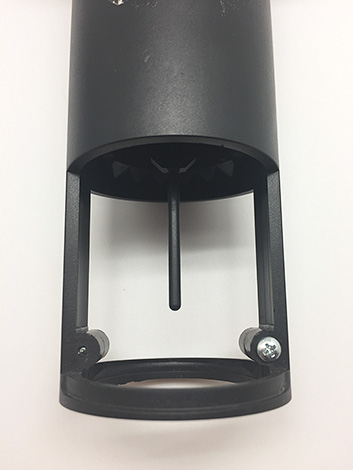
Mole cat Cat Fedr in cocked state - the gatehouse, which is a plastic rod, is visible.
The gatehouse itself is plastic, it is a thin vertical rod hanging from the lower end to the working part of the pipe, and the upper one fixed to the trigger. The gatekeeper lowers the trap if the animal tries to push the bar with its paws to the sides, pull it toward itself or accidentally push it, moving along and resting against it with its head.
According to the idea, due to the powerful spring, Cat Fedr should immediately kill the mole, interrupting his spine in the cervical spine, so that later, after removing the trap from the passage, he would not have to bother with finishing off the caught victim. So the trap should work ideally, however, there is reason to believe that the device can misfire - see below a little about this.
Cat Fedr and SuperCat Vole Trap - the same thing, or not?
As noted earlier, mole-catcher Cat Fedr is outwardly an almost complete copy of the Swiss mole catcher SuperCat Vole Trap. It may seem to an inexperienced buyer that the difference between these products is only in the name, price (Kot Fedr is 100-300 rubles cheaper) and a safety warning (for a Swiss product it is printed on the case, and for a Russian one it is written on a paper sticker).
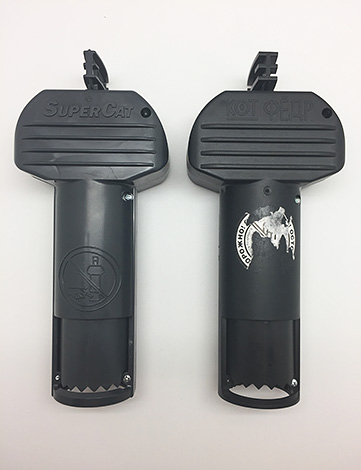
Manufacturers of Kota Fedra copied a Swiss product that became popular in Russia and Europe, taking advantage of the fact that the manufacturer of the original mole catcher did not extend the patent for its product in the territory of the Russian Federation. At the same time, the replica turned out to be almost identical to the original, however, there are significant practical differences in the performance of these devices:
- At the Mole Cat Cat Fedor the gatehouse (the most important element of the device, which determines its sensitivity and effectiveness) is made in the form of an ordinary plastic rod, and in the SuperCat Vole Trap it is bifurcated at the end. According to the test results, SWISSINNO specialists found that a gatehouse in the form of a single rod can pass small pests - mice and voles, which in some cases can get past it from the side and not lower the mechanism, or lower it, already inside the whole tube. As a result, the animal will either not be caught at all, or it will not be killed, but blocked inside. It is not even known which option is worse (if a gardener pulls out a trap, opens it, and a mouse jumps out of there, this may not be a very pleasant surprise). The double gatehouse in the SuperCat Vole Trap prevents these situations.
On a note
It is interesting, by the way, that the gatehouse in the form of a single bar was installed in old versions of the Swiss trap, that is, Cat Fedr was copied from quite old versions.
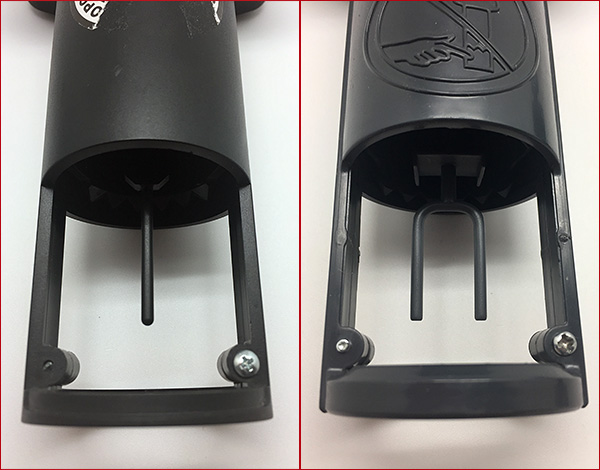
- The trap body Cat Fedra smells of plastic - products made from recycled plastic usually have this smell. On the advertising page of the device it is indicated that it is made of high-quality ABS plastic. The same is indicated in the characteristics of the SuperCat Vole Trap, however, the Swiss mole catcher does not smell at all, while the Cat Fedr has a specific aroma (at least until the mole catcher is new). This is a minus - moles are very sensitive to smells, and experienced catchers (including hunters) always charge traps only with gloves so as not to leave the slightest odor;
- The manufacturer Kota Fedra does not produce special accessories - the probe and capture, which, if desired, can be purchased in addition to SuperCat Vole Trap. It is these accessories that provide maximum convenience and ease of work with the trap, and without them, it largely loses its advantages over conventional wire mole traps, which cost tens of times cheaper.
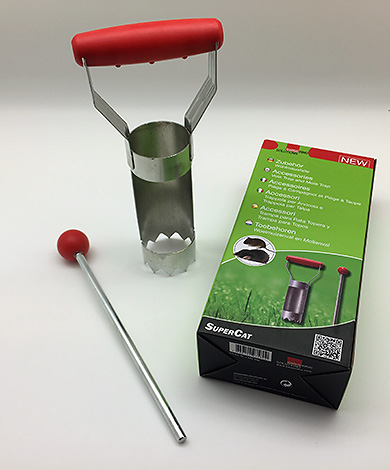
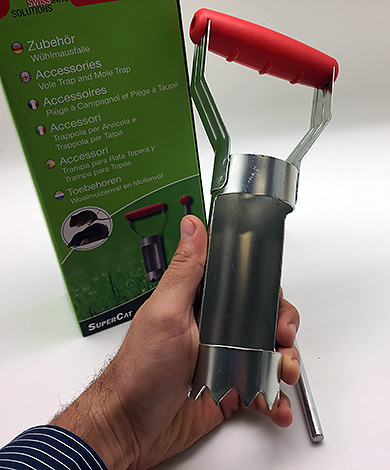
Thus, it can be noted that the mole cat trap Fedr is a Russian analogue of the outdated model of the Swiss trap SuperCat Vole Trap. Does this affect the performance of the device? Let's figure it out ...
How effective is the mole cat cat Fedr
With the correct installation of the mole cat, Cat Fedr really allows you to get rid of pests on the site, and the success of such a fight will be largely determined not only by the effectiveness of the device, but also by the literacy of the person himself and his diligence.Often, the trap is installed in the course of the mole, it depends more than on the trap itself, and in some cases the mole trap needs to be placed several times in different places until the desired result is obtained.
Cat Fedr allows you to catch medium-sized pests - moles, rats (including water ones), mole rats, ground squirrels. Due to the fact that the size of the holes in the lower part of the trap is quite small, these animals will inevitably touch the gatehouse if they try to get through the mole catcher blocking the passage. And with the slightest movement, the gatehouse immediately lowers the hunting mechanism.
Here you need to pay attention that between the shock part of the Cat Fedra and the lower edge of the pipe when triggered there is a noticeable gap (while in SuperCat Vole Trap, the tines reach the very end). It is not known whether this is caused by design flaws, or is related to the specifics of the trigger mechanism, but there is a risk that, when triggered, the shock mechanism will not kill, but only cripple the animal. Pulling the dying wounded animal from the trap would then be a rather unpleasant task (in addition, a wounded mole may bite).
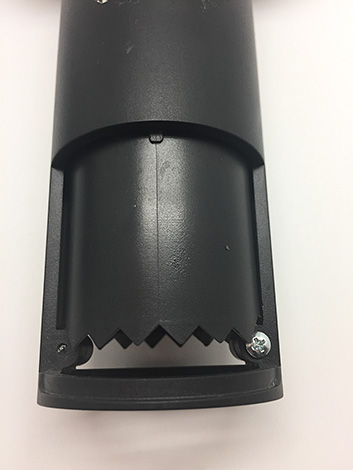
The shock catcher of the mole cat Kot Fedr does not reach the bottom - there remains a large gap.
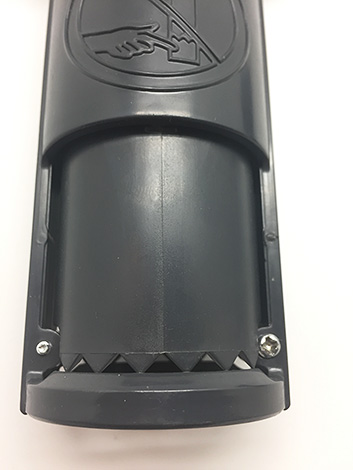
In the Swiss mole catcher, the brace goes all the way down.
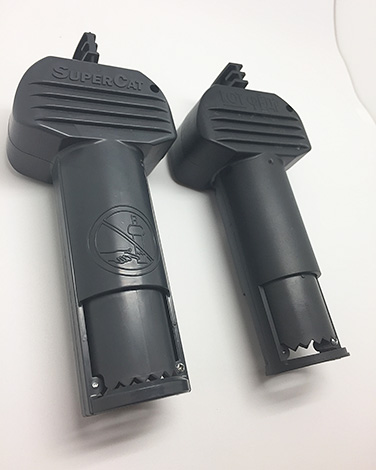
As for small pests - mice, voles, shrews - due to the outdated construction of the gatehouse, with some probability they will be able to safely get through the trap. This does not mean that she will not catch them at all, but does mean that she will miss some part of such pests.
There is also reason to believe that due to the smell of plastic that repels moles, Cat Fedr may work slightly less efficiently than the original SuperCat Vole Trap. However, there are no exact comparative data, and such assumptions remain only speculations.
However, some consumers say that moles recognize Cat Fedra well as being dangerous.
Feedback on the use of the Cat Fedr mole trap:
“He put it this way and that way - the mole pushes it out. He relied on this trap, but only Octopus works. Glad for those who get something with her. I could not get…"
Convenience and order of use
Simplicity and ease of use are the main declared advantages of Cat Fedra. The whole structure is thought out in order to facilitate the installation of the trap and the removal of the mole caught therein.
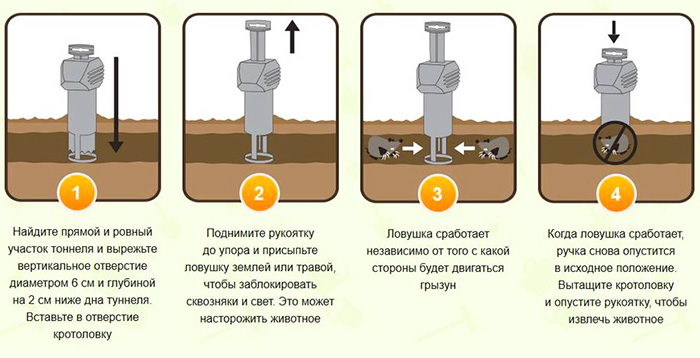
Work with Cat Fedr is as follows:
- A vertical hole is dug into a wormhole (preferably in the middle between the ejections of the earth, but not close to such an ejection). Ideally, the hole should have the same diameter as the mole tube pipe;
- The mole trap is inserted into the hole and is oriented so that the wide side of the box is perpendicular to the direction of travel. In this case, the holes in the lower part of the trap will exactly coincide with the course of the mole;
- A man rests on the box with one hand, and the second raises the cocking lever;
- 1-2 times a day the position of the lever is checked. It is clearly visible from 10-15 meters. If the lever is released, it means the mole catcher has worked;
- If a pest is caught in the mole catcher, the pipe is pulled along with it from the hole. Then just pull the cocking lever again so that the mole falls out of the trap.
All manipulations should be carried out with gloves so that there is no smell of hands on the mole catcher.
On a note
There is an opinion that it is useful to put crushed earthworms in the place of installation of any mole catcher in order to attract a mole, because worms are its main food. Practice shows that this is not required: there are already many worms in the courses, and therefore the mole will pick up the trap only with a regular check of the course.
If we talk about the convenience of using a mole trap, then one cannot fail to note the obvious drawback of Cat Fedra compared to the original SuperCat Vole Trap - the inability to additionally buy special accessories (probe and ground capture), which greatly facilitate the installation of the trap.The probe allows you to quickly and accurately determine the position of the stroke between the two "molehills" and the depth of its occurrence in the ground. And with the help of a gripper, you can quickly and accurately dig a straight hole straight into the course, and its diameter will exactly correspond to the diameter of the crusher's “pipe”.
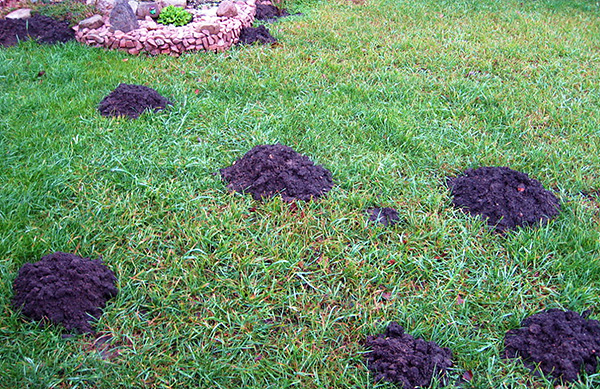
So, without these devices, all the advantages of Kota Fedra (as well as SuperCat Vole Trap, if you do not buy accessories) are significantly depreciated. Without a probe, it is extremely difficult to accurately determine the position of the stroke. But even if you replace the probe with a home-made one, having adapted some kind of steel rod, for lack of capture, you have to dig a molehill with a spatula or a garden scoop. As a result, the hole turns out to be large, the trap has to be rested against it in some way, so that it stands upright, and after installation, it is filled up with earth at the edges.
This is especially critical if you have to install a mole catcher on a lawn or in a flower garden - a pit dug by a shovel does not look very nice. In fact, the gardener himself begins to supplement the harmful activity of the mole, regularly digging holes in his plot.
When using the capture, the hole turns out to be perfectly smooth, small and inconspicuous - the mole catcher becomes tight in it and does not fall to the sides. If necessary, it is convenient to pull the trap out of the hole and reinstall it.
When working with a grab, you can literally dig out a hole and set a trap in 1-2 minutes.
On a note
It turns out that if you work without additional accessories, then there is not much difference which trap to set - Cat Fedr, SuperCat Vole Trap or wire trap for 40 rubles. All the same, you have to dig a hole, set a trap in it, and then somehow and somehow cover this hole until the mole is caught.
It is interesting at the same time that Russian and Swiss traps differ little in price. SuperCat Vole Trap costs about 1200 rubles (and when you buy 5 pieces with accessories through the program of discounts from the manufacturer, less than 1000 rubles per piece comes out), Cat Fedr - 900 rubles (today you can buy these mole traps in specialized stores in Moscow and St. Petersburg, as well as in online stores with delivery to any region). It turns out that the difference between the Russian replica of an outdated design and a modern Swiss original is approximately 100-300 rubles, depending on the number of products purchased.
Additional accessories to the SuperCat Vole Trap, which greatly facilitate the work, cost 800 rubles per set - in fact, this is the price for convenience, ease of use and great accuracy when working.
Is this trap safe?
In its safety, the Cat Fed trap is almost identical to the SuperCat Vole Trap and surpasses most of the simpler traps. The main advantage is that after installing the molehill, pets and children cannot be injured with it - all the elements that can pinch a finger or paw are underground - only an animal moving along an underground hole can get to the working body.
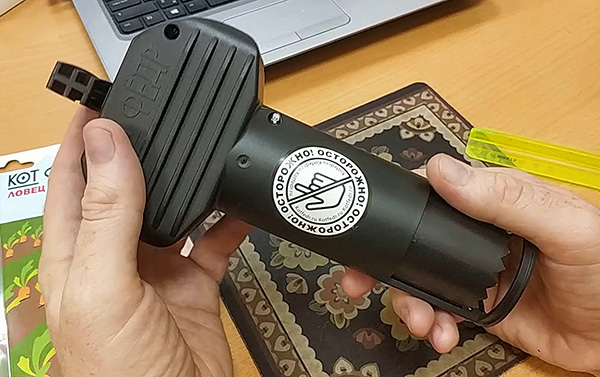
On a note
With some probability, useful animals can also get into Kota Fedra: shrews that destroy a lot of pests on the garden plot, lizards, even weasels, regularly inspecting the voles burrows. But these are already inevitable risks.
It’s almost impossible to be injured directly when working with the device - the trigger of the molehill cocked when the shock part is already in the ground. There is a likelihood of injury if, out of curiosity, to test the operation of the mechanism without putting it in the ground, but in this case, the "tester" is entirely responsible for the consequences.
Especially for warning of such a danger, the Kot Fedr cattle trap body has a warning sticker, and the SuperCat Vole Trap has a warning sign engraved on the case. And even in this seemingly insignificant detail there is a difference - the engraving will remain on the body of the product forever, and the sticker will peel off after the next wetting of the trap in wet ground.
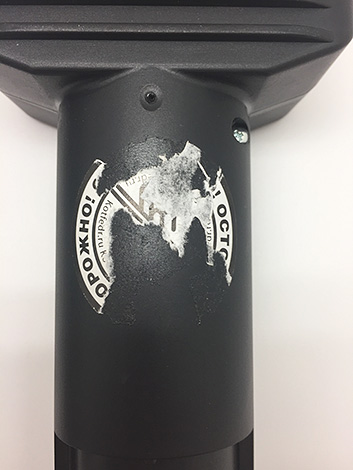
The moot cat danger warning icon Cat Fedr is made of paper, so it can get wet in the ground and subsequently come off.

And so the warning icon looks at the SuperCat Vole Trap trap.
Compare the mole cat Cat Fedr with other devices and ways to catch pests
Summing up, we can say that, compared to the original SuperCat Vole Trap, Cat Fed is a somewhat outdated and cheap version. It can be assumed that in a statistically significant test sample, the mole trap is slightly inferior in efficiency to the analogue of the SWISSINO production due to the undifferentiated gatehouse and the smell of plastic.
If we talk about the full set of SuperCat Vole Trap with additionally purchased accessories, then Cat Fedr will definitely yield to it in terms of ease of use, although it will cost less. Here, the buyer must decide what is more important for him - simplicity, ease of use and minimal damage to the lawn, or price.
From the point of view of ease of use, Cat Fedr does not have obvious advantages over standard molehills. To install it, you also need to dig up the course with a shovel or a shovel, and it’s not even so important here, two wire traps for 80 rubles of steam, a trap-pipe for 300 rubles, or Cat Fedr for 900 rubles will be installed in the course. The difference in labor costs for installing all these devices is minimal (much less than the difference in price).
On a note
It should be borne in mind that often to catch a mole you have to test several places for installing a mole trap. If you do this without special tools, you will literally have to dig a lawn or flower garden.
As a result, Cat Fedr is a mole catcher, the appropriateness of buying which is difficult to explain to a practical owner. If cheapness is important for a person, then it is better for him to buy a wire trap at a price of 80 rubles per pair and catch a mole in the same way as with the help of Cat Fedra: dig a passage with a shovel, set traps, cover with roofing material. If convenience and minimal damage to a well-kept lawn or flower garden when installing a trap is required, it is better to buy a SuperCat Vole Trap with a set of additional accessories.
That is, in fact, Cat Fedr is suitable for those who are not particularly worried about the beauty of the lawn and for whom 100-300 rubles in price difference with the original Swiss model are critical.
If you have personal experience of using the Kot Fedr mootole trap in practice - be sure to share the information by leaving your review at the bottom of this page (in the comments box).
Video review of the mole cat Cat Fedr
Feedback on using the SuperCat Vole Trap

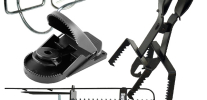
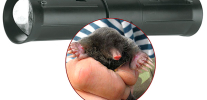
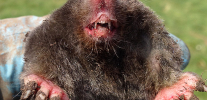
Thank! Good article. Fedra bought, it did not seem to me that it smells of plastic. But it was really difficult to install the first time. But the probe and the needle for 1000 rubles - the Swiss have gone too far. A narrow spatula and skewer helped)) It's strange why the sticker was made.
No matter how I tried, the result is zero. Money down the drain.
I caught 8 moles, but then how many did not set - they bury.
Very pleased with the mole cat Kot Fedor, I caught 6 moles plowing my plot. Thank you very much.